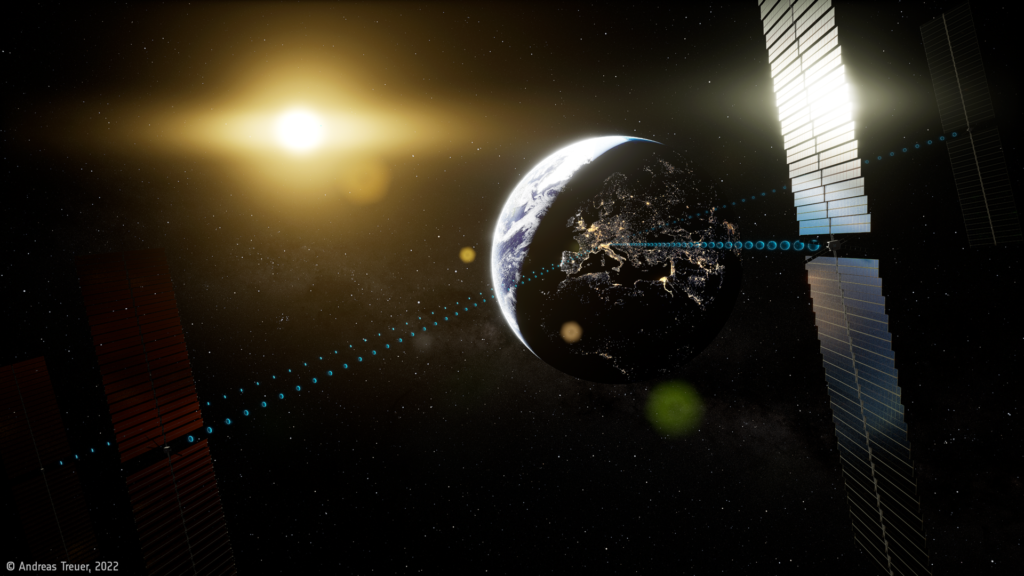From pv magazine Spain
UK-based engineering solution firm IECL has developed a project called Cassiopeia to generate solar power in space for terrestrial energy needs.
The project takes its name from a 2,000-tonne satellite located 36,000 kilometres above Earth. The satellite would collect solar energy using large, lightweight mirrors, each up to 1,700 m in diameter, positioned at 45° to a helical array of up to 60,000 solar panels that produce electricity.
“Space-based solar power has two huge advantages over traditional methods: on the one hand, placing a sunlight-capturing satellite in space means we wouldn’t need to cover large tracts of land with solar panels,” said Ian Cash, IECL chief engineer and author of “CASSIOPeiA – A new paradigm for space solar power,” published in the journal Acta Astronautica. “On the other, we would not be dependent on local weather conditions or whether it is day or night.”
The study concluded that it was feasible to deploy a system consisting of a Cassiopeia satellite in geostationary orbit, which would generate about 3.4 GW of electricity on the satellite. This would be converted to radio frequency microwave radiation, with an efficiency of 85%. A net power of 2.9 GW would then be transmitted to a receiving antenna located at a fixed point on the ground. The antenna would convert the electromagnetic energy into direct current electricity and then, through an inverter, supply a net power of 2 GW of alternating current to the grid.
It would cost $28.7 billion (USD 18.7 billion) to develop and launch the project. Considering a minimum rate of return on investment of 20% per year, the report concludes that a space-based solar power system could, over its lifetime of approximately 100 years, generate power at $73.75 (USD 48)/MWh. If the project were scaled up, it could supply more than 150% of all global electricity demand.
The project envisions a 40 MW pilot project placed in low-Earth orbit from 2027 to 2031. Between 2036 and 2039, a 2 GW production prototype would be in orbit.
In early 2022, the European Space Agency (ESA) commissioned two independent cost-benefit studies of space-based solar power for terrestrial energy needs from UK and Germany-based consulting firms Frazer-Nash and Roland Berger, respectively.
The studies were completed in August 2022 and both concluded that it is possible to provide competitively priced electricity to European homes and businesses by 2040. The total estimated costs of a pilot development, which would generate 2 GW, have been estimated at up to $5.4 billion.
This content is protected by copyright and may not be reused. If you want to cooperate with us and would like to reuse some of our content, please contact: editors@pv-magazine.com.



